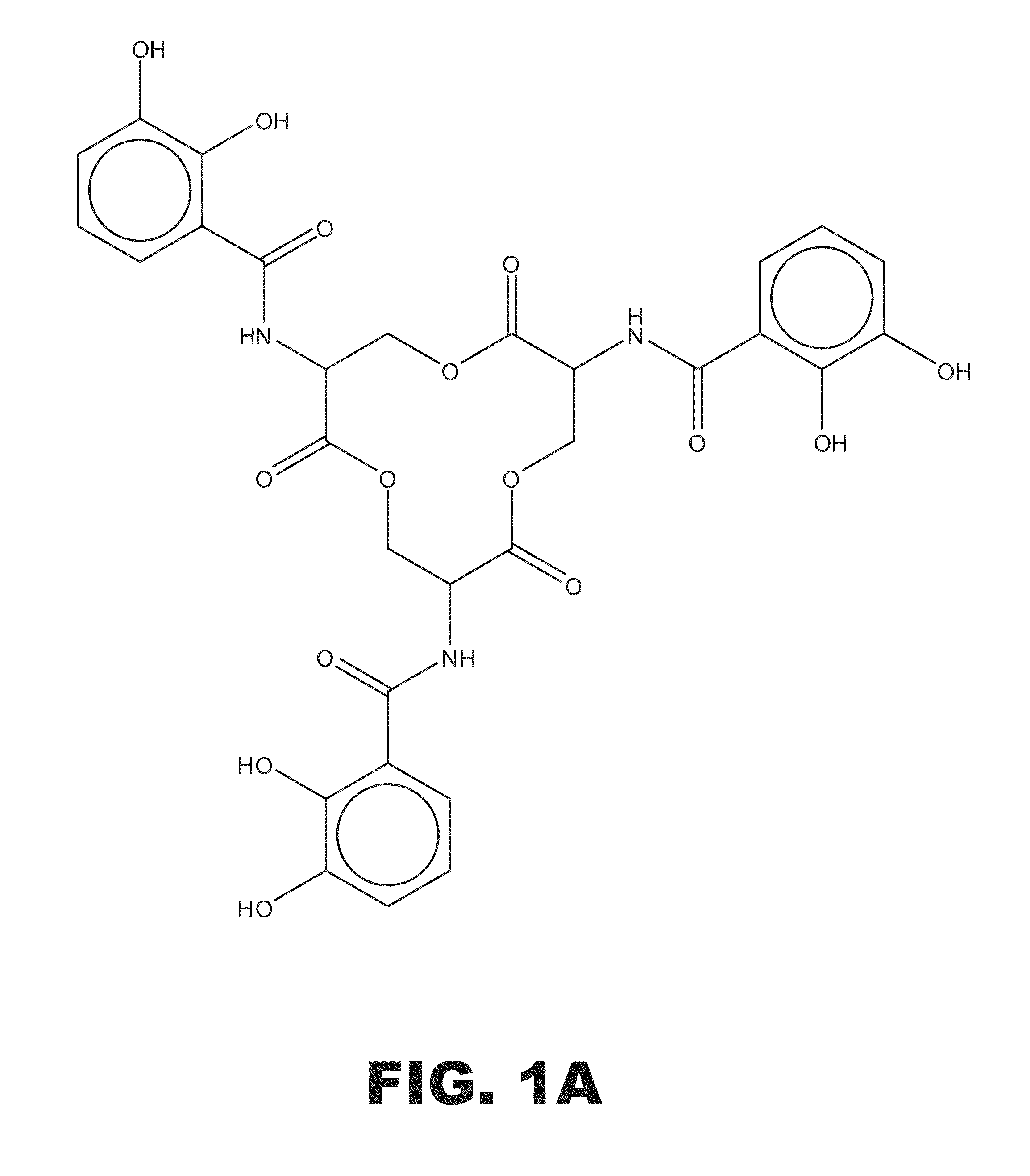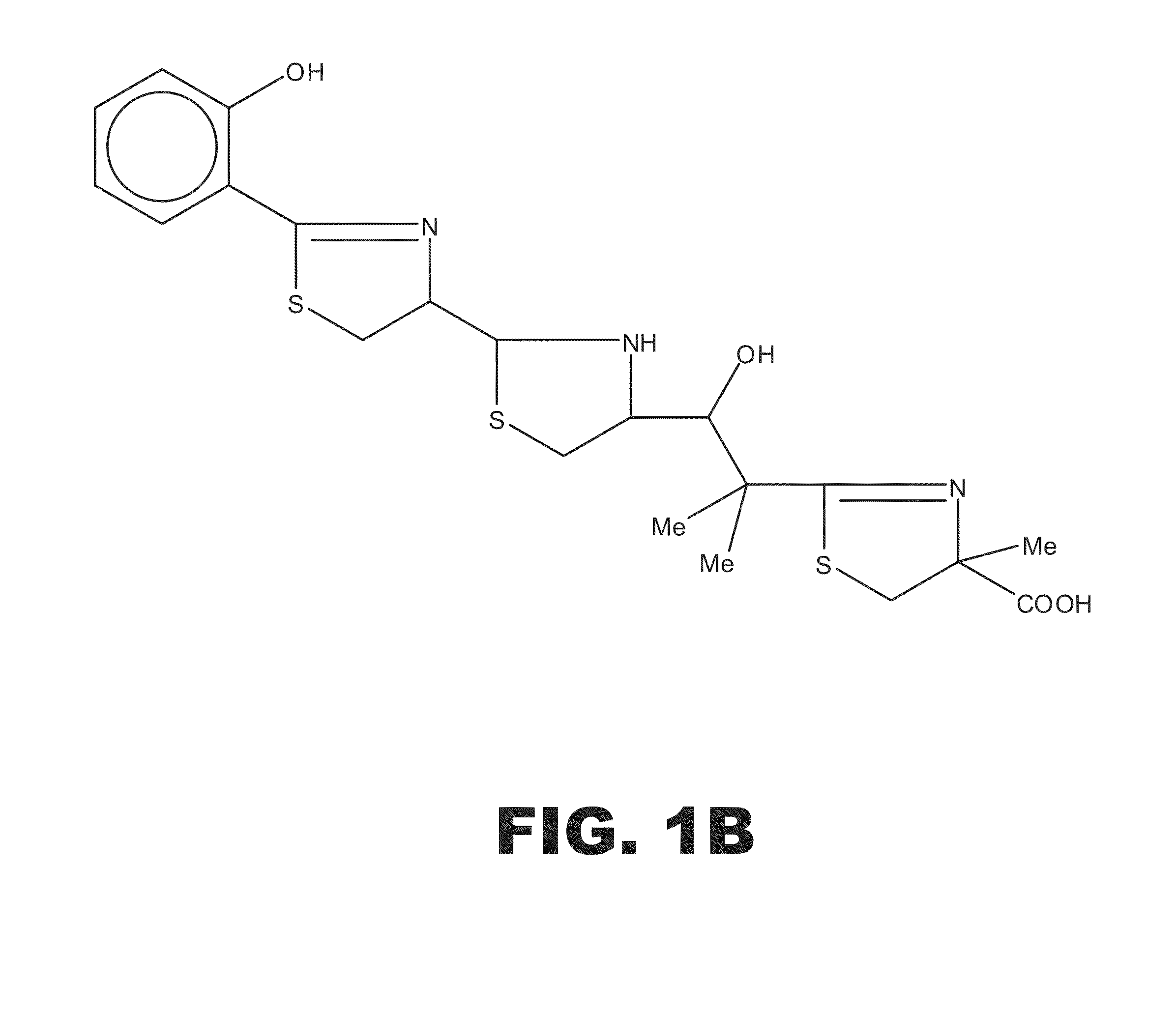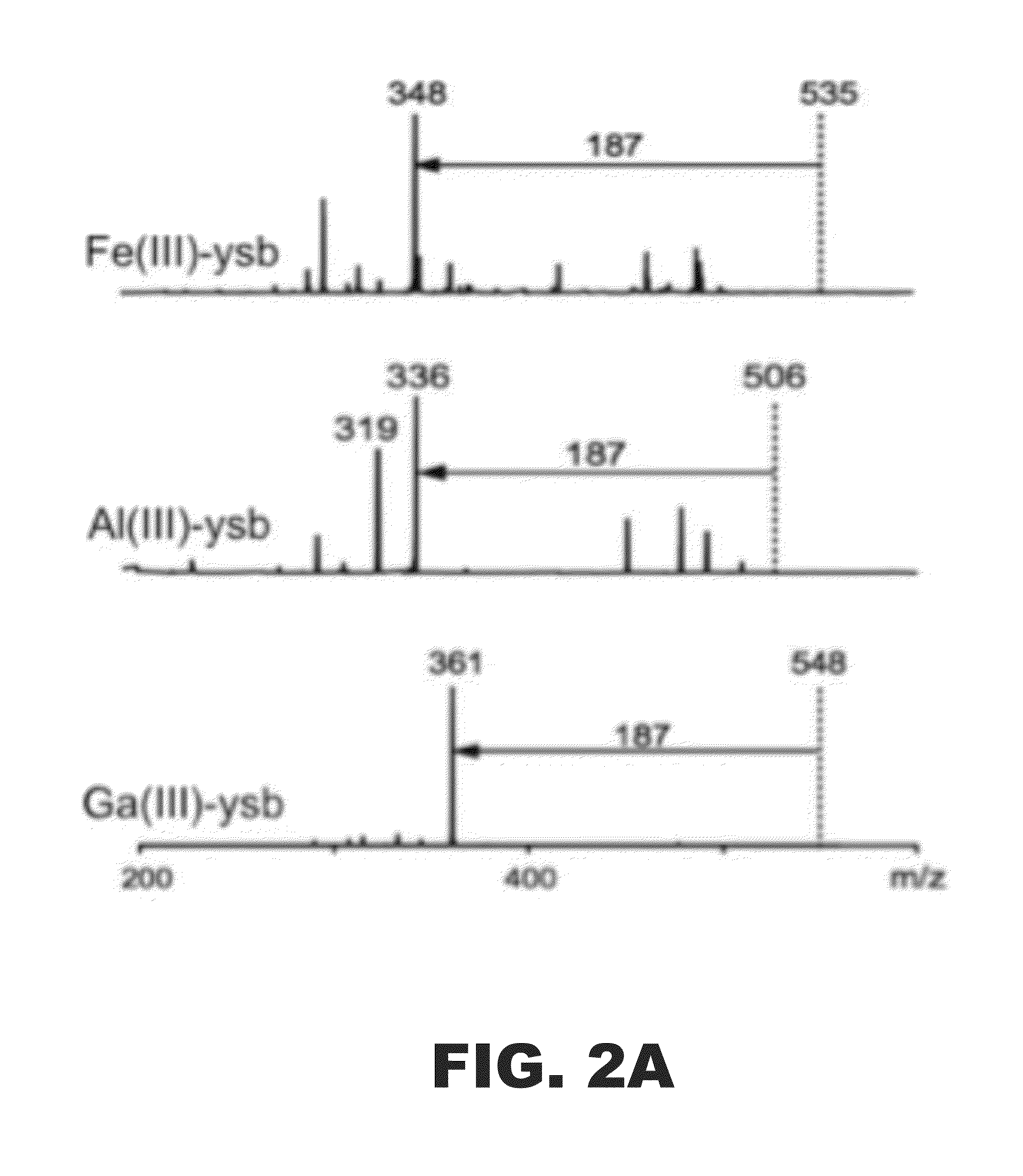Biomarker and therapeutic for urinary tract infection
a technology of urinary tract infection and biomarker, which is applied in the field of biomarker and therapeutic for urinary tract infection, can solve the problems of significant recurrence infections
- Summary
- Abstract
- Description
- Claims
- Application Information
AI Technical Summary
Benefits of technology
Problems solved by technology
Method used
Image
Examples
examples
[0077]The following examples illustrate various iterations of the invention.
examples 1-10
Introduction to Examples 1-10
[0078]Siderophores are a chemically diverse group of secondary metabolites used extensively by microbes—and possibly higher vertebrates—to bind and acquire ferric iron. While chemists have recognized the ability of some siderophores to bind non-ferric metal ions, investigations into pathophysiologic functions of siderophores have solely addressed their favorable interaction with ferric iron. The marked chemical diversity and differential iron binding affinities among siderophores raises the possibility that some may have evolved to bind non-ferric metal ions to fulfill additional physiologic functions. Indeed, alterations in physiologic metal composition at sites of infection may have driven bacterial pathogens to secrete siderophores with differential metal specificity to maintain fitness within the host. Understanding the functional consequences arising from this chemical coevolution between host and pathogen may provide new insights into the selective...
example 1
A Liquid Chromatography-Mass Spectrometry Screen Reveals a New Yersiniabactin-Metal Complex
[0081]To screen for metals that bind yersiniabactin (Ybt) in a biologically relevant environment, a liquid chromatography-constant neutral loss (LC-CNL) mass spectrometric screen based on a common ion fragmentation pathway identified for model metal-yersiniabactin complexes was devised. This fragmentation pathway results in a 187 mass unit neutral loss, consistent with rearrangement of the C13-C14 bond to lose the carboxy-terminal thiazoline (C8H13NO2S, FIGS. 2A and 2B). To identify biologically relevant metal-Ybt complexes, we added apo-Ybt to pooled urine samples from six healthy donors and analyzed the mixture using LC-CNL over a mass range encompassing the calculated range of naturally-occurring terrestrial metal complexes (6Li to 239Pu). The LC-CNL ion chromatogram revealed formation of a dominant, novel analyte with m / z 543 (peak 1, FIG. 2C) in addition to a peak corresponding to Fe(III)...
PUM
 Login to View More
Login to View More Abstract
Description
Claims
Application Information
 Login to View More
Login to View More - R&D
- Intellectual Property
- Life Sciences
- Materials
- Tech Scout
- Unparalleled Data Quality
- Higher Quality Content
- 60% Fewer Hallucinations
Browse by: Latest US Patents, China's latest patents, Technical Efficacy Thesaurus, Application Domain, Technology Topic, Popular Technical Reports.
© 2025 PatSnap. All rights reserved.Legal|Privacy policy|Modern Slavery Act Transparency Statement|Sitemap|About US| Contact US: help@patsnap.com



